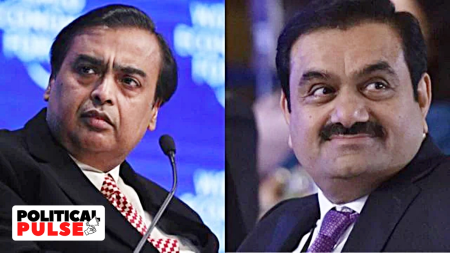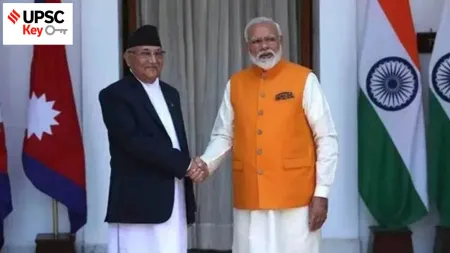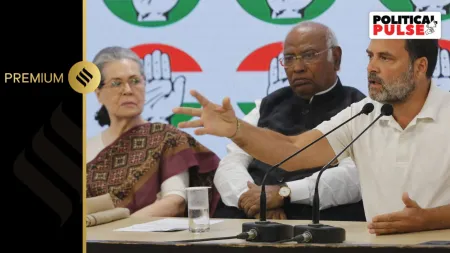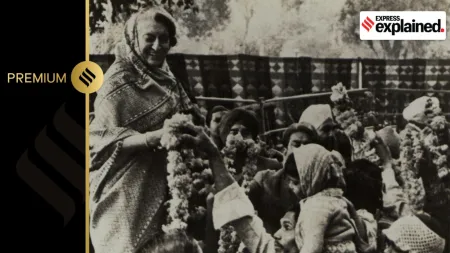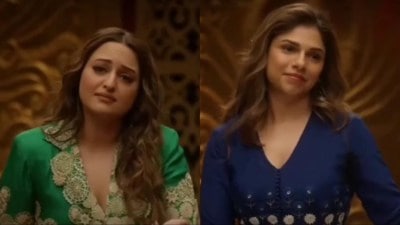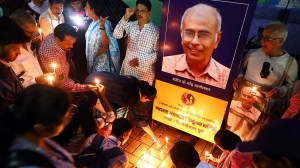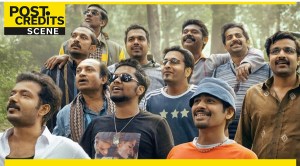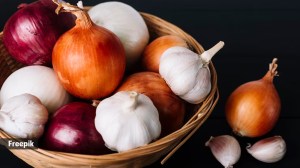- India
- International
Maratha reservation: A long history of political tug-of-war and litigation
In June 2019, the Bombay High Court upheld the constitutional validity of the Maratha quota under the Socially and Educationally Backward Classes (SEBC) Act, 2018.
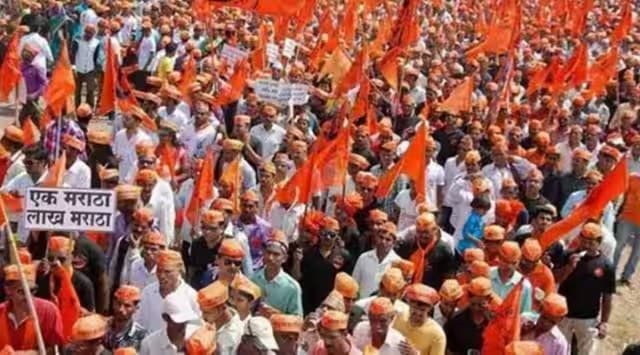 Since 1981, Maratha reservation has become an integral part of politics in the state and a cause for mass protests. (Express File Photo)
Since 1981, Maratha reservation has become an integral part of politics in the state and a cause for mass protests. (Express File Photo) With Lok Sabha and Assembly elections in sight, the complex politics of Maratha reservation has once again taken the centre-stage in Maharashtra politics. While it is part of a high-level inquiry to find out who is behind this renewed aggression that led to violence in Jalna district, senior politicians making a beeline to personally greet Manoj Jarange Patil, who is on a week-long indefinite fast at Antarwali Sarathi village in Jalna district, is a telling comment.
Who are the Marathas?
The Marathas are a group of castes comprising peasants and landowners among others constituting nearly 33 per cent of state’s population. While most Marathas are Marathi-speaking, not all Marathi-speaking people belong to the Maratha community. This politically dominant community in state comprises nearly one-third of the population of the state. Historically, they have been identified as a ‘warrior’ caste with large land holdings. Since the formation of Maharashtra state in 1960, of its 20 chief ministers, 12 (including Eknath Shinde) have been from the Maratha community. While division of land and agrarian problems over the years have led to a decline of prosperity among middle class and lower middle-class Marathas, the community still plays an important role in the rural economy.
The demand for reservation
The Marathas have been demanding reservation in government jobs and educational institutions for a long time. The first protest was held 32 years ago by Mathadi Labour Union leader Annasaheb Patil in Mumbai. Since 1981, Maratha reservation has become an integral part of politics in the state and a cause for mass protests.
In the past six decades, Maharashtra, which has always been politically dominated by Marathas, failed to find a lasting solution to this vexed problem.
Ahead of the 2014 Assembly elections, the then Prithviraj Chavan-led state government brought an ordinance pronouncing 16 per cent reservation to Marathas in government jobs and education. It was based on the then Narayan Rane Committee recommendations.

In 2014, the Congress-NCP coalition (1999 to 2014) was dislodged and the BJP-Shiv Sena coalition came to power under Devendra Fadnavis. Barely two years later in August 2016, the Kopardi rape and killing of a 15-year-old girl rocked the state. The unrest within Marathas culminated into well-planned and orchestrated protests under the Maratha Kranti Morcha and Sakal Maratha Samaj across the state.
The protests, which turned violent in 2017-18, saw the Fadnavis government taking concrete measures to resolve the vexed issue. In November 2018, based on the findings of Backward Class Commission headed by M G Gaikwad, the government gave its nod for reservation to Marathas under a special provision — Socially and Educationally Backward Class Act. The reservation gave BJP a political edge over the then rival Congress-NCP.
Nearly five years later, Deputy Chief Minister Devendra Fadnavis, who holds the important home portfolio, is once again the target of his opponents riding the Maratha quota politics. When MVA was in power (2019 to 2022), BJP also explored reservation issues to consolidate its base among Marathas. It yielded results, with BJP emerging as the number one party in local bodies elections.
However, today it is at the receiving end as Congress, NCP (Sharad Pawar) and Shiv Sena (UBT) have joined hands to take CM Eknath Shinde-led coalition to task. With changing permutations and combinations, how the Maratha politics will impact the administration remains to be seen. Unlike during the Fadnavis regime (2014-2019), where an upper caste CM led the state, today Shinde and Deputy CM Ajit Pawar belong to the Maratha community.
High Court verdict in 2019
In June 2019, the Bombay High Court upheld the constitutional validity of the Maratha quota under the Socially and Educationally Backward Classes (SEBC) Act, 2018. While ruling that the 16 per cent quota granted by the state was not ‘justifiable,’ the HC reduced it to 12 per cent in education and 13 per cent in government jobs, as recommended by the Maharashtra State Backward Class Commission.
The HC, however, said that the limit of reservation should not exceed 50%. However, in exceptional circumstances and extraordinary situations, this limit can be crossed. It said that this will be subject to availability of quantifiable and contemporaneous data reflecting backwardness, inadequacy of representation and without affecting the efficiency in administration.
What did the HC rely on?
The court heavily relied on the findings of the 11-member Maharashtra State Backward Class Commission (MSBCC) headed by Justice G M Gaikwad (retd). The commission surveyed nearly 45, 000 families from two villages from each of 355 talukas with more than 50 per cent Maratha population.
The report submitted on November 15, 2018 said the Maratha community is socially, economically and educationally backward. The HC expressed satisfaction over the data and observed that the commission had conclusively established the social, economic and educational backwardness of the Maratha community. It had also established inadequacy of representation of Maratha community in public employment in the state.
Maratha quota in SC
In May 2021, a five-judge Constitution bench of the Supreme Court headed by Justice Ashok Bhushan struck down the provisions of Maharashtra law providing reservation to the Maratha community, which took the total quota in the state above the 50 per cent ceiling set by the court in its 1992 Indra Sawhney (Mandal) judgment. In November 2022, after the SC upheld the 10 per cent quota for the Economically Weaker Sections, the state government said that until the issue of Maratha reservation is resolved, economically weaker members of the community can benefit from the EWS quota.
In April this year, after the SC turned down its review plea, the state government said it will file a curtive petition. The government had also said that a new dedicated panel will be formed for a detailed survey of the ‘backwardness’ of the community. However, the state government has not filed a curative petition in the SC as yet.
May 10: Latest News
- 01
- 02
- 03
- 04
- 05


